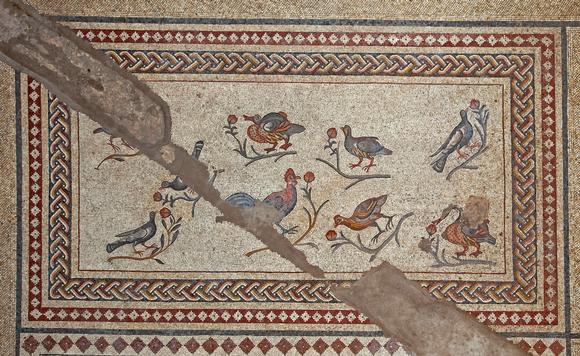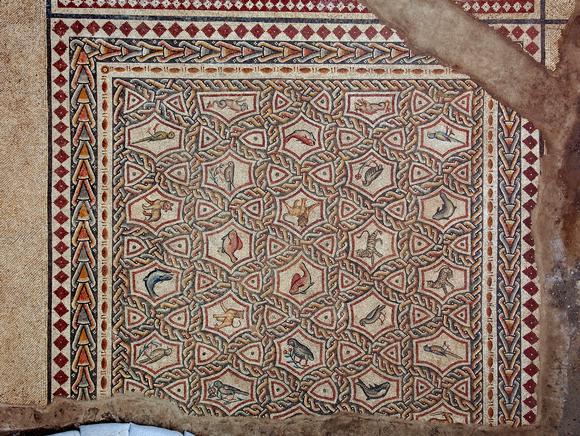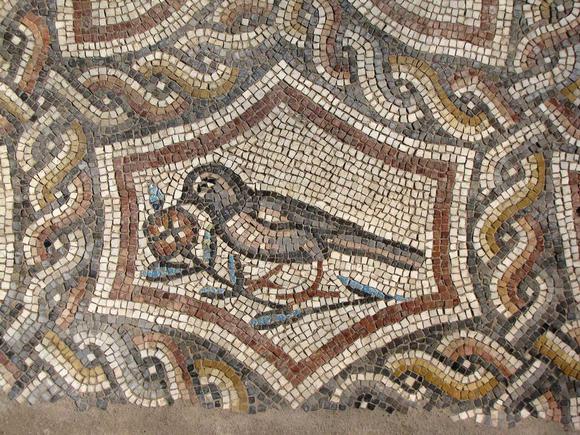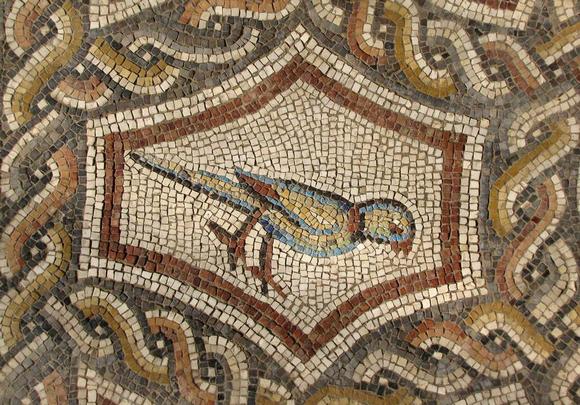3. The panel with the birds and the panel with the small animals
This phase is characterized by a deviation from the main axe of the mosaic; the axis of this part of the pavement is displaced 15 degrees to the south east. The eastern wall of the building has the same deviation.


3.1. Mosaic’s stratigraphy:
Tesselatum – natural colored limestone tesserae, colored glass tesserae
Lime bed – white colored fine lime mortar. The mortar composition will be defined in the future.
Nucleus - white colored lime mortar layer, 2 cm in depth. The mortar composition will be defined in the future.
Rudus – gray colored lime mortar layer, 5 cm in depth. The mortar composition will be defined in the future. On the rudus layer impressions of the feet of the mosaic masters and workers are very well preserved.
Statumen – First (upper) layer of very carefully arranged and leveraged stones (broken limestone blocks-10x7x4cm); second layer of very carefully arranged and leveraged white river pebbles/stones (7-12cm) and well compacted soil. The soil characteristics will be investigated later on.
 Panel with small animals: fragment
Panel with small animals: fragment 3.2. Execution techniques:
We did not find any traces of incisions or synopia on the nucleus layer. The layout of the mosaic was executed by a "free handed" master using less precise geometry for the positioning of the figures but at the same time skillfully adjusting the geometrical patterns (mainly in the corners) to fit the irregularity in the composition.
 Panel with small animals: fragment
Panel with small animals: fragment Conservation: 1 | 2 | 3 | 4 | 5 | 6 | 7 | 8 | 9 | 10 | 11 | Next page




